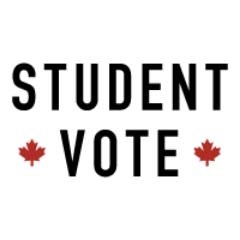If Justin Trudeau was thrilled with the result of a 184-seat Liberal majority government in the general election October 19, imagine how he would have felt if the country had given him 225.
That was the result of a parallel Student Vote Program conducted by CIVIX, a not-for-profit educational organization, in conjunction with Elections Canada.
Across the country, 922,000 students from 6,760 schools in all 338 ridings cast ballots in the week preceding the actual vote.
On the basis of the student vote, the Conservative Party still would have made up the official opposition with 71 seats, while the NDP ranked third with 40 seats.
Interestingly, the seat result came with a slightly lower share of the popular vote for the Liberals at 37.6 per cent of the student vote compared to 39.4 per cent in the general election. The NDP picked up an almost identical share of the popular vote with 19.6 per cent while the Conservatives dropped from 31.9 per cent among real voters to 26 per cent of students.
So, the big Liberal seat count was a result of how the rest of the vote broke down amongst the other parties.
The Green Party fared much better among students with 12 per cent of the popular vote instead of 3.4 per cent, which would have translated to four rather than one seat. The Bloc Quebecois on the other hand was completely shut out of the seat count with only 0.66 per cent of the popular vote compared to the real result of 10 seats and 4.7 per cent.
Kids were also much more likely to give their votes to independent candidates and fringe parties. A total of 19 other parties (counting Independent as a “party”) received votes in the general election. Regular voters cast just 0.8 per cent of votes for these candidates. On the other hand, students gave 4.1 per cent of their collective vote to other parties and independents.
Saskatchewan students were much kinder to the Liberals casting 31.3 per cent of their votes for the red team compared to 23.9 per cent among real voters. That would have given Trudeau three seats rather than one—Regina-Wascana, Saskatoon West and Saskatoon-Grasswoods. In the actual election, the Liberals held Regina Wascana, Saskatoon West was a pick up by the NDP and Saskatoon-Grasswood was a hold for the Conservatives.
Along with the Liberals, the Greens did much better among Saskatchewan students with 9.1 per cent over 2.1 per cent, while both the Conservatives and NDP did worse, the Conservatives from 48.5 per cent to 36.8 per cent and the NDP from 25.1 per cent to 22.7 per cent.
The Yorkton-Melville result remained solidly in Cathay Wagantall’s hands, but with less of lead in the student election than in the general vote. On election day, Wagantall received 59.2 per cent of the vote compared to Doug Ottenbreit (NDP) at 20.2 per cent, Brooke Malinoski (Liberal) at 17.8 per cent and Eileen Hughes (Green) at 2.8 per cent.
Yorkton-Melville students gave Wagantall only 40.1 per cent of the vote followed by Malinoski (27.2 per cent), Ottenbreit (21.1 per cent) and Hughes (11.6 per cent).
Locally, 2,721 students from 39 schools voted representing an overall voter turnout of 70 per cent, almost identical to actual voter turnout.




